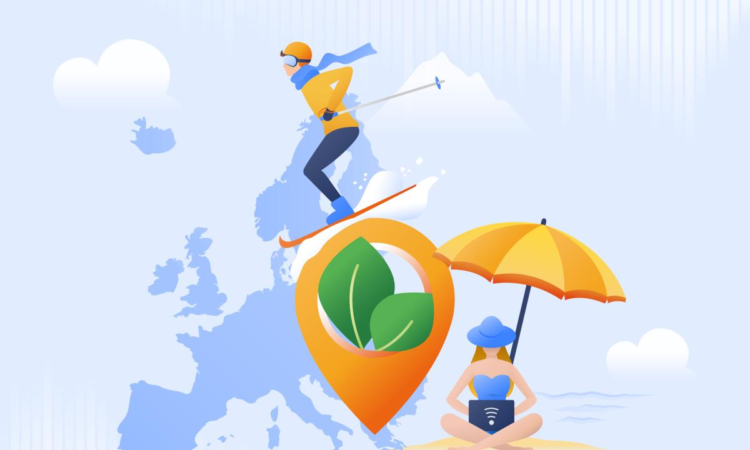
Fresh statistics on EU tourism suggest that in 2022, tourism demand was already at nearly 96% the level in 2019. This shows an almost full recovery on average for the EU, with countries like Belgium, Denmark, France, Ireland, and Netherlands even surpassing pre-pandemic levels.
However, recovery in Eastern European tourism destinations has been more sluggish, possibly also due to the war in Ukraine. Data also shows that international tourism demand is picking up more slowly than domestic tourism, staying in 2022 at 91% the level of 2019.
These new figures result from an update of the EU Tourism Dashboard, an interactive tool providing statistics and indicators relevant for tourism policies. These include, amongst others, the environmental and socio-economic impact in a given area, the level of digitalisation and the main tourism typology.
The recent upgrade has brought updated figures and novel indicators on the adoption of environmental labels and schemes by tourist accommodations, nature-based tourism opportunities and the economic impact of tourism.
A greener and digitalised tourism in the EU
According to the new data, on the digitalisation front, internet infrastructure continues to improve, covering tourism destinations with ever increasing internet speeds: in 2019, only 10% of the tourism capacity had internet speed above 100 Mb/s. This has improved to 42% and 63% in 2021 and 2023, respectively.
On the green front, nearly 850 tourist accommodation establishments had the EU Ecolabel in 2022 or were registered to the EU Eco-Management and Audit Scheme (EMAS). The EU tourism dashboard also identifies that other 4750 tourist accommodations in the EU countries, Switzerland, Iceland and Norway that have other reliable environmental labels and schemes.
However, the number is still a tiny fraction of the nearly 650,000 tourist accommodation establishments in these countries.
Better data to design policies for a more sustainable tourism
The new data collected and provided in the upgraded dashboard will further help decision makers to identify vulnerabilities and opportunities, and to design effective strategies to make the EU tourism ecosystem more sustainable and resilient to possible shocks, for example encouraging further the adoption of reliable environmental labels and schemes by tourist accommodation establishments.
The EU Tourism Dashboard is a valuable source of knowledge for policy makers in EU countries and regions to better understand how tourism is progressing towards the green and digital transition, and to assess local socio-economic resilience. It can also contribute to the work of statistics experts in EU countries, of researchers, as well as of public and private operators who promote local and regional tourism.
Indicators on the dashboard are organised under three main policy pillars: green, digital and socioeconomic. The dashboard also includes descriptors of tourism demand and supply such as occupancy rates, average duration of stays, presence of UNESCO sites and many more.
Background
Launched in October 2022, the EU Tourism Dashboard was developed by the JRC and the European Commission’s Directorate-General for Internal Market, Industry, Entrepreneurship and SMEs, following a request by EU Member States in 2021 to design a tool for monitoring the twin transition and resilience of the tourism ecosystem – one of the most heavily affected by the travel and health restrictions put in place during the COVID-19 pandemic. The dashboard is developed in cooperation with Eurostat and in coordination with the EU Member States.
The initiative contributes to the Transition Pathway for Tourism published in February 2022, which was created in collaboration with public and private EU tourism stakeholders to identify 27 areas of actions for the green and digital transition and for improving the resilience of EU tourism. Improving statistics and measurements for tourism regarding its economic, environmental and social impacts was recognised among key topics for action.






